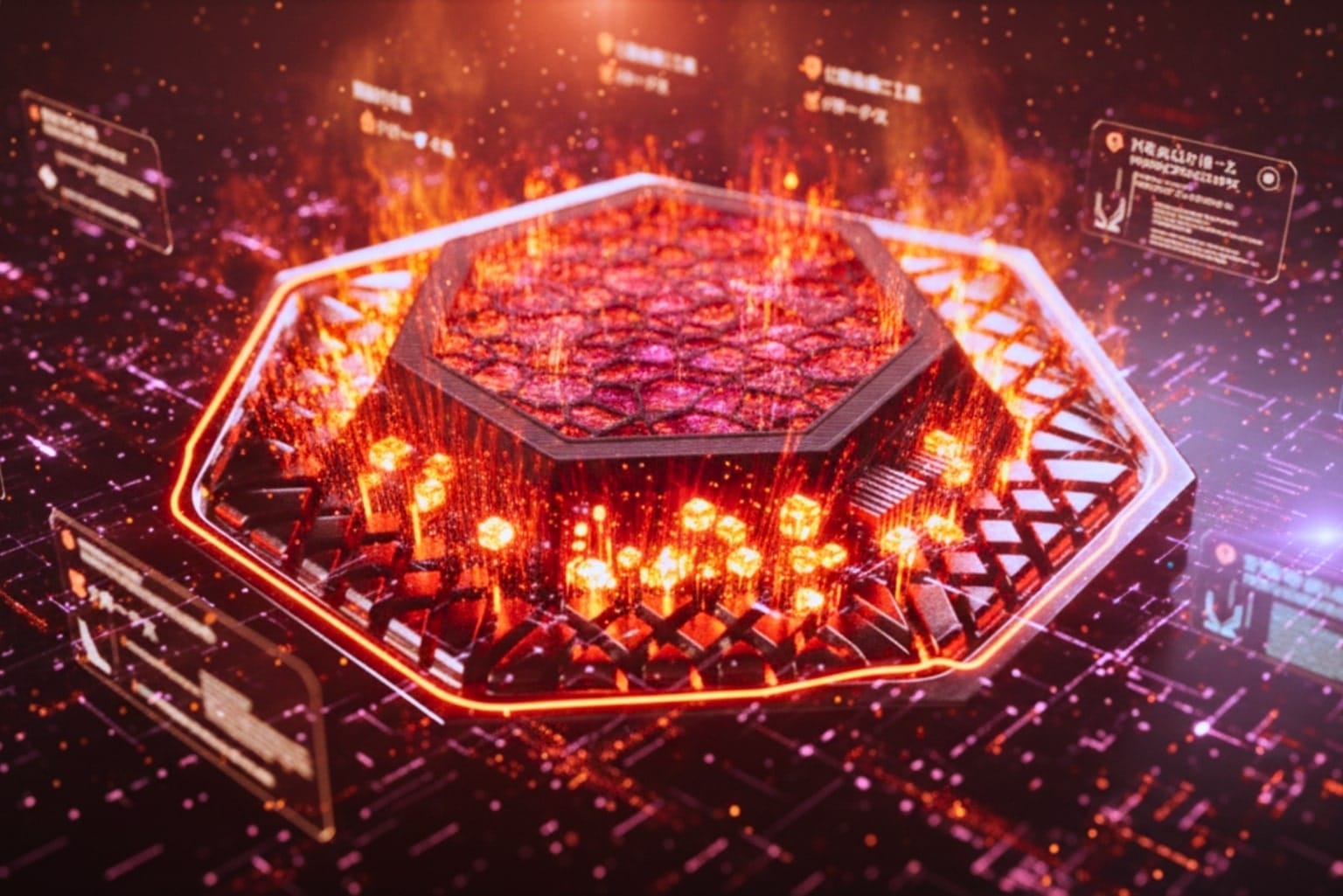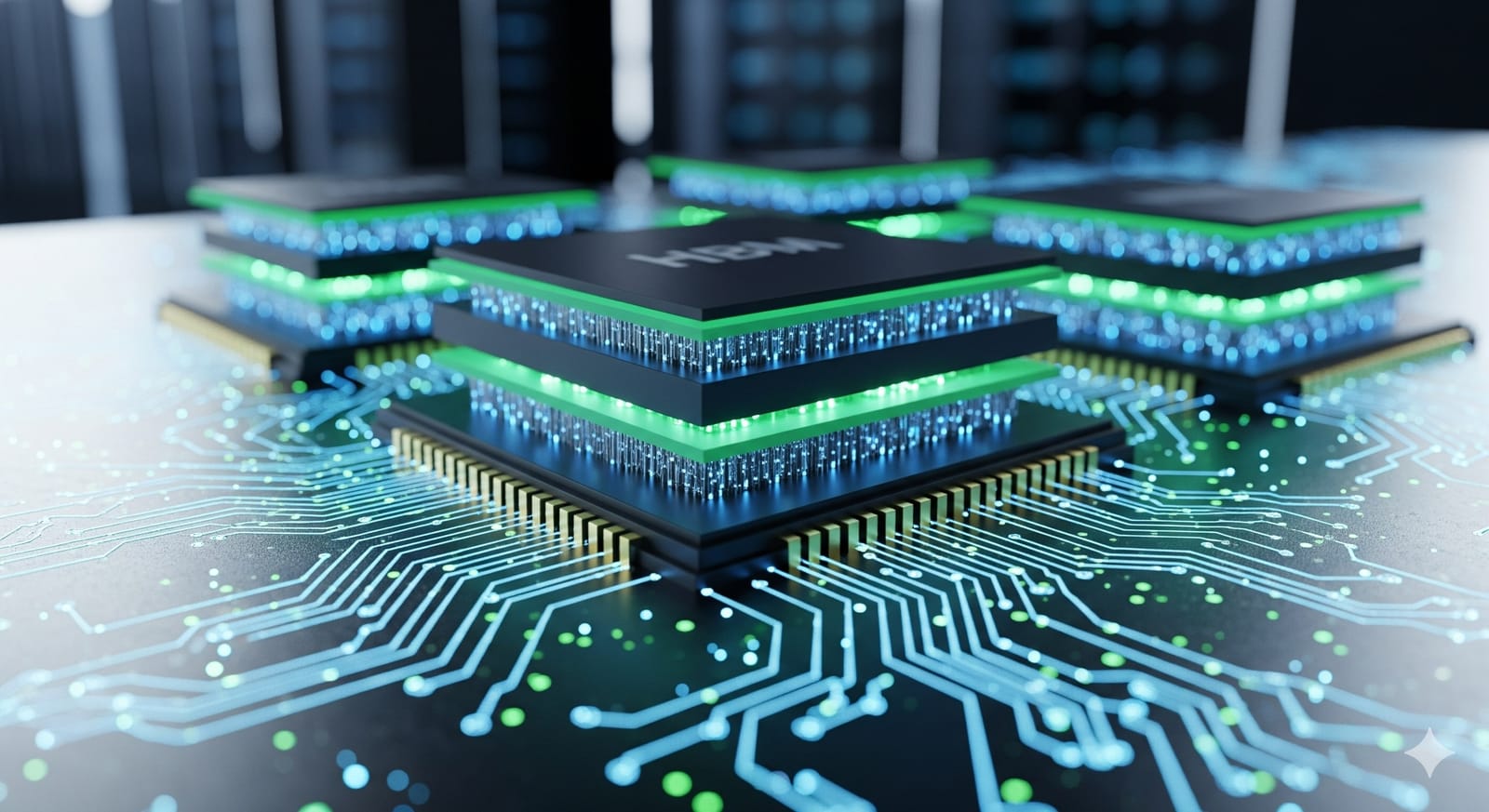Introduction
AI has an energy problem. Models keep getting larger, inference demand keeps compounding, and the grid is already groaning. What if we stopped asking GPUs to fake randomness—and built chips whose native operation is sampling? That’s Extropic’s wager.
Extropic is putting forward thermodynamic computing: hardware made of tiny probabilistic circuits that sample from carefully shaped probability distributions. Instead of cranking matrix multiplies to infer probabilities and then sampling on top, their thermodynamic sampling units (TSUs) take samples directly—by exploiting physical noise inside transistor networks. The claim: on certain generative workloads, TSUs could match GPU quality with orders-of-magnitude less energy. Extropic+1
This is a new compute primitive, a new algorithmic stack, and a new bet on what “AI per Joule” will look like in the next era.
What Extropic Is Actually Building
The short version: TSUs are probabilistic computers. You program them with the parameters of an energy-based model (EBM), they emit samples from that model. Use many TSU cells in parallel, orchestrate them with Gibbs / block-Gibbs updates, and you can approximate rich distributions that underpin generative AI. Extropic+1
Callout: Generative AI is, at its core, sampling. TSUs skip the detour through huge matrix products and sample the distribution directly in silicon. Extropic
Why now?
Two secular shifts make this timely:
- Workloads are probabilistic. Diffusion, generative modeling, uncertainty quantification—these are all sampling-heavy by nature.
- Energy is the bottleneck. Most power on modern accelerators is spent moving bits across wires (“communication energy”), not the arithmetic itself. TSUs push computation and state into local neighborhoods, slashing wire charge-discharge costs by design. Extropic
How TSUs Work (without the hand-waving)
TSUs are arrays of probabilistic circuits—tiny analog/stochastic cells whose outputs wander according to tunable probability laws. Combine thousands to millions of these cells with local couplings and you get a hardware fabric that samples from an EBM defined over a graph.
Core cell types (first-gen):
- p-bit: a hardware Bernoulli sampler (biased coin).
- p-dit: a categorical sampler with k discrete states.
- p-mode: a Gaussian sampler (1D/2D, with programmable covariance).
- p-MoG: a sampler for mixtures of Gaussians (modes and weights programmable). Extropic+1
Each cell reads neighbors’ states via short wires, computes a small update distribution, and samples—physically—so there’s no separate RNG and no long shuttles to distant memory. That localism is the efficiency story. Extropic
“Instead of separate memory and compute, TSUs store and process information in a distributed way where communication is local.” Extropic
Why EBMs and Gibbs?
An EBM assigns an “energy” to each configuration; lower energy = higher probability. TSU arrays naturally implement Gibbs sampling on such models: update one partition of nodes given the other, then swap—perfect for bipartite or locally connected graphs. That maps beautifully onto silicon neighborhoods. Extropic
The Algorithmic Stack: DTM and DTCA
Raw EBMs are expressive—but their energy landscapes are rugged. Mix poorly and you stall. Extropic’s answer is a new family of models, Denoising Thermodynamic Models (DTMs), and a matching Denoising Thermodynamic Computer Architecture (DTCA).
- DTMs: diffusion-inspired chains of denoising steps. Each step is itself an EBM that TSUs can sample in few, large “moves,” avoiding the infinite-step limit that made GPUs attractive.
- DTCA: the system design that chains hardware EBMs and moves data between steps efficiently. arXiv+1
In their paper, Extropic presents a system-level analysis suggesting performance parity with a GPU baseline on a small image benchmark (think Fashion-MNIST scale), with ~10,000× lower energy per generated sample—based on simulations/models of their hardware and prototype micro-measurements. It’s early, but it’s the first coherent architecture-algorithm co-design for this paradigm. Extropic
Context: Modern diffusion (DDPM) is thermodynamics-flavored but optimized for deterministic math on GPUs. DTM “reclaims” the sampling side—and gives it hardware built for noise. arXiv
Hardware Roadmap: From X0 to Z1
X0 (Q1 2025, silicon prototype). Purpose: validate the physics and show all-transistor probabilistic circuits—no exotic nanomagnets or cryo. X0 hosts the p-bit/p-dit/p-mode/p-MoG primitives. Extropic+1
XTR-0 (Q3 2025, dev/research platform). A motherboard with a CPU + FPGA and two sockets for Extropic chips, currently talking to X0 dies. It’s the bridge to algorithm development and a path to plug-in future TSUs. Extropic
Measured micro-claim: The p-bit can perform millions to hundreds of millions of flips per second using ~10,000× less energy per flip than a floating-point add on digital hardware (prototype level). Extropic
Z1 (Early Access 2026). The first production-scale TSU, with hundreds of thousands of sampling cells per chip and millions per card, fabbed in standard CMOS. This is where end-to-end measurements will decide the story. Extropic
Software & Ecosystem: THRML and Replication
THRML is an open-source JAX library for building probabilistic graphical models and running block Gibbs on sparse, heterogeneous graphs—doubling as a TSU simulator and a place to prototype thermodynamic algorithms today. Initial public release v0.1.3 landed on October 29, 2025. GitHub+1
Extropic also funded an independent replication of the DTM experiments (small image benchmarks) so anyone with a GPU can test the pipeline and examine FID and autocorrelation numbers. That’s exactly what you want to see in an early research program: code, replication, documentation. Extropic
The 10,000× Energy Claim—Signal and Salt
What’s claimed: On a small generative image benchmark, a DTM on TSU-like hardware could match a GPU baseline’s quality while using ~10,000× less energy per sample. This comes from a system-level analysis and simulations calibrated by prototype micro-measurements—not from a datacenter-scale product chip running an LLM. Extropic+1
Why it’s plausible (in principle):
- Local communication: sampling updates talk to neighbors, not far-flung DRAM; wire capacitance dominates chip energy today.
- In-cell RNG + update: analog/stochastic physics does the random draw and the update—no separate RNG kernels or large digital datapaths.
- Algorithmic match: DTM lets each step be complex enough to be efficient on TSUs, avoiding the infinite-step “deterministic” regime that GPUs favor. Extropic+1
Caveats that matter:
- The headline number is from simple benchmarks, not text or multimodal models; it’s not a drop-in LLM replacement claim.
- True system energy includes host sync, off-chip I/O, scheduling, and any resampling overheads; those can eat gains.
- Z1 is the inflection—until then, we’re extrapolating from X0 + models. Extropic+1
Our take: the physics and architecture story is coherent; the burden is now end-to-end measurement on Z1-class hardware.
Where TSUs Could Win First (and Why)
- Energy-sensitive generative pipelines (images/video) where cost per sample beats raw latency—DTM-style pipelines or hybrids with GPU backbones. Extropic
- Uncertainty quantification / Monte Carlo (weather, risk, Bayesian inference), where massively parallel sampling is the job, not an afterthought—TSUs make programmable randomness a first-class compute resource. Extropic
- Simulation & optimization (molecular/nuclear, discrete/continuous), and world models for robotics/autonomy, where sampling-heavy inner loops dominate. Extropic
Pull, not push: if TSUs deliver 2–3 orders of magnitude energy savings on workloads already bottlenecked by sampling, integration pressure will come from practitioners, not just from hype decks.
What This Means for the GPU World
This is not “GPUs are dead.” It is a heterogeneous future: matmul for dense linear algebra; sampling silicon for probabilistic inner loops; interposers/PCIe for orchestration. Extropic even sketches paths from XTR-0 to PCIe cards or co-packaged GPU+TSU. That’s the right systems mindset. Extropic
The economic lens is simple: Joules per useful output. If TSUs can cheaply generate ensembles or posteriors for the same energy a GPU spends on one pass, cloud AI economics shift—especially in weather, risk, and generative services priced by content volume.
Risks & Open Questions (no BS)
- Device variability & drift. Analog & stochastic circuits can be sensitive to temperature, aging, and process corners. How tight are relaxation times and bias curves at Z1 scale? Extropic
- Compiler & mapping. Turning a high-level PGM into a TSU placement and schedule (block sizes, clamping, routing) is a research program in itself. THRML is early. GitHub
- System overheads. Host control, synchronization, interconnect bandwidth—all potential Amdahl walls that chip away at energy gains. Extropic
- Algorithmic breadth. DTMs show promise on small images; text & LLMs likely require new hybrids or different model classes tailored to sampling hardware. Extropic is explicit about this. Extropic
- Independent validation. The narrative will hinge on third-party measurements: power, latency, quality, and cost on Z1 boards. Extropic
The Company, Team & Timeline (need-to-knows)
- Founded: 2022. Mission: build the world’s most energy-efficient computers. Team backgrounds: Google, IBM, Apple, Microsoft. Extropic
- Funding: Publicly announced $14.1M seed (Dec 4, 2023). Extropic
- Public milestones: Writing posts (“From Zero to One,” “TSU 101,” “Inside X0 & XTR-0”), THRML release, DTM paper (Oct 28, 2025). Extropic+3Extropic+3Extropic+3
- Hardware cadence: X0 (Q1 2025), XTR-0 (Q3 2025), Z1 Early Access 2026. Extropic
Why This Matters
TSUs recast the silicon-software contract around energy, not just FLOPs. If Extropic’s approach bears out, we don’t merely get cheaper samples; we get new classes of algorithms that were too energy-wasteful on digital hardware. That could make uncertainty-aware AI practical at scale, accelerate science (simulation, inference), and re-balance datacenter growth against grid constraints.
It’s also culturally significant: a reminder that progress in AI isn’t only scale-up—it’s also rethink-the-primitive. Betting on physics (noise) over brute force (more watts) is the kind of idea that moves the frontier.
What to Watch (next 12–18 months)
- Z1 bring-up with rigorous energy/latency/quality measurements on public benchmarks—including host/I/O overheads. Extropic
- Compiler/runtime progress: THRML → TSU mapping, scheduling, and topology-aware block Gibbs. GitHub
- Hybrid demos in the wild: GPU+TSU for weather ensembles, Bayesian posteriors, or diffusion-style generation where joules per sample is the KPI. Extropic
- Third-party replications that extend beyond Fashion-MNIST and probe robustness (mismatch, temperature, drift).
The Vastkind Lens—Who’s Affected & How?
- Builders of generative products: Potential to slash COGS where volume dominates (e.g., image/video generation, simulation backends).
- Scientific modeling & risk analytics: Native, massive sampling could make ensembles routine, not aspirational.
- Chip & cloud providers: Heterogeneous nodes with sampling silicon join GPUs/TPUs; scheduling and interconnect design become differentiators.
- Policy & energy stakeholders: “AI per Joule” becomes a procurement metric alongside performance and latency.
“The next platform shift is not just bigger models—it’s different physics.”
External Authority Links (scholarly)
- Extropic DTM / DTCA paper (arXiv, Oct 28, 2025) — system-level analysis and ~10,000× energy claim on a small benchmark. Extropic
- DDPM (Ho et al., 2020) — thermodynamics-inspired diffusion foundations. arXiv
- TSU technical explainer & hardware posts — architectural details and prototype measurements. Extropic+2Extropic+2
- THRML GitHub (v0.1.3 release) — library for PGMs/block-Gibbs and TSU simulation. GitHub
(Note: Media coverage has tracked early partner interest and roadmap timing; the authoritative technical details come from Extropic’s posts, paper, and code.) WIRED
Bottom Line
Extropic isn’t just taping out a chip; it’s proposing a new compute primitive—sampling—to sit alongside matmul. The physics is sound, the architectural story hangs together, and the software on-ramp exists. What separates promise from product now is evidence at Z1 scale: power meters, latency histograms, quality curves, and total-system energy that includes the messy bits between host, interconnect, and silicon.
If they hit anywhere near the claimed order-of-magnitude energy wins on real workloads, the implications are enormous: AI that scales on the energy axis instead of just the capex axis, and a broader palette of probabilistic algorithms that were impractical on GPUs.
Extropic’s bigger idea is cultural as much as technical: co-evolve algorithms with hardware built for their nature. If the future of AI is probabilistic, sampling chips might feel as inevitable in 2030 as GPUs felt in 2016.
Transparency & Sources
Company materials: the “From Zero to One” announcement, TSU 101, and Inside X0 & XTR-0 outline the architecture, hardware roadmap, and prototype claims. The arXiv paper supplies the system-level energy analysis and authorship/timing. THRML GitHub (v0.1.3) documents the open-source library and release. Recent Wired coverage provides context on early access and interest.






